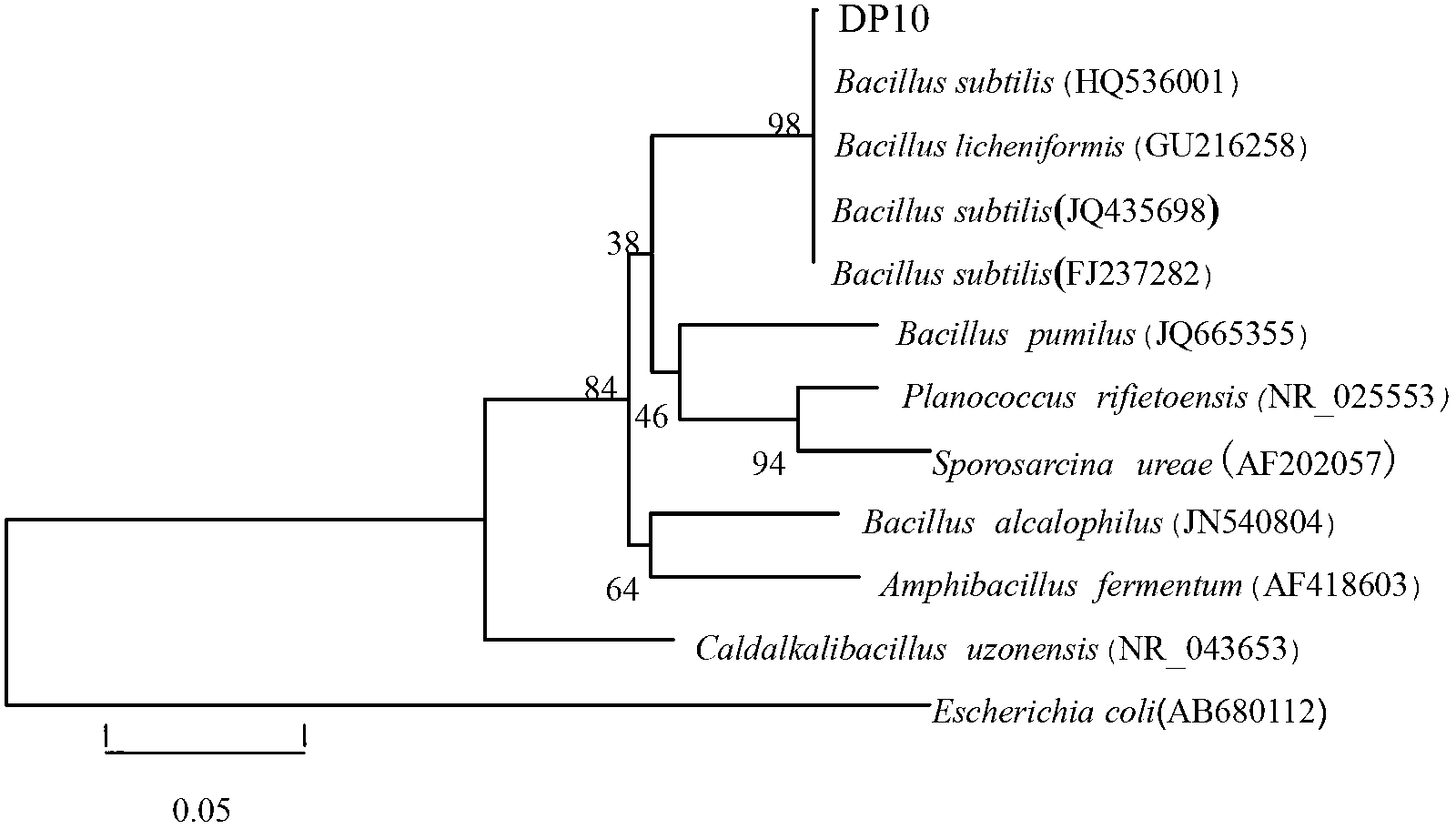Method for obtaining endophytic bacteria for degrading verticillium dahlia toxin protein and application in preventing and treating plant verticillium wilt
A technology of plant endophytic bacteria, Verticillium dahliae, applied in the fields of botanical equipment and methods, plant growth regulators, microorganism-based methods, etc., can solve problems such as uninquiry
- Summary
- Abstract
- Description
- Claims
- Application Information
AI Technical Summary
Problems solved by technology
Method used
Image
Examples
Embodiment 1
[0043] Example 1: Isolation and Endophytic Determination of Plant Endophytic Bacteria
[0044] (1) Isolation of strains: Collect cotton, tomato, strawberry, cucumber and other plants from different planting places, wash and dry the roots, stems and leaves with tap water, weigh 1-2g each, soak in 1% NaClO for 5min , washed 5 times with sterile water, and then surface-sterilized with 0.1% mercuric chloride. Leaves were washed for 1 minute, roots and stems for 3 minutes, washed 5 times with sterile water, and blotted dry with sterile filter paper. Put the leaves into a sterile tissue homogenizer, weigh the roots and stems, put them into a sterile mortar and grind them, take 1g sample and add 9mL sterile water to make 10 -1 , diluted with sterile water to 10 -5 , After resting for 15 minutes, take 200μl each and spread on the plate, and repeat 3 times for each treatment. Take 200 μL of sterile water from the last rinse and smear it on the plate to verify whether the disinfection...
Embodiment 2
[0047] Example 2: Identification of Plant Endophytic Bacteria
[0048] Example 1 The isolated plant endophytic bacterial strains take DP10 as an example: DP10 was streaked and inoculated on NA medium, cultured at 28°C for 24 hours, firstly, 30 μL of sterile water was added to a 1.5 mL centrifuge tube, and picked with an inoculation needle Take a small amount of bacteria to make a suspension in water, boil for 10 minutes, quickly ice-bath for 5 minutes, centrifuge at 12000r / min at 4°C for 5 minutes, and the supernatant is used as a PCR template.
[0049] Reaction system (50 μL): 10×PCR buffer (5 μL), dNTP mixture (10 mmol / L) 1 μL, MgCl2 (25 mmol / L) 4 μL, primer P0 (5 μmol / L) 1 μL, primer P5 (5 μmol / L) 1 μL, Taq DNA polymerase (5U / L) 0.5μL, 5μL supernatant as Template, add ddH 2 O 32.5 μL to a final volume of 50 μL.
[0050] Design 16SrDNA primers: forward primer: 5'-GAGAGTTTGATCCTGGCTCAG-3' (SEQ ID NO.1)
[0051] Reverse primer: 5'-CTACGGCTACCTTGTTACGA-3' (S...
Embodiment 3
[0056] Embodiment 3: Preparation of Verticillium dahliae toxin VD solution and plant endophytic bacteria suspension
[0057] The used Verticillium dahliae can be published standard strains such as ACCC36120, ACCC36129, ACCC36217, ACCC36211 of China Agricultural Microorganism Collection Center, or can be isolated as in Example 4.
[0058] Put the Verticillium dahliae fermentation broth in a water bath at 100°C for 1 hour, vacuum filter with a 6-layer filter paper Buchner funnel, discard the mycelium, centrifuge the filtrate at 8000r / min for 10 minutes, and take the supernatant and pass it through 0.45μm and 0.22μm microporous membranes in turn Vacuum filtration, the filtrate is crude toxin liquid, namely VD liquid.
[0059] Dip a circle of activated endophytic bacterial strains (SZ5, CCM9 and DP10 strains) with an inoculation needle, inoculate them into a 250 mL Erlenmeyer flask containing 30 mL of NB culture solution, and culture them on a shaker at 28 °C at 150 r / min for 48 h...
PUM
 Login to View More
Login to View More Abstract
Description
Claims
Application Information
 Login to View More
Login to View More - R&D
- Intellectual Property
- Life Sciences
- Materials
- Tech Scout
- Unparalleled Data Quality
- Higher Quality Content
- 60% Fewer Hallucinations
Browse by: Latest US Patents, China's latest patents, Technical Efficacy Thesaurus, Application Domain, Technology Topic, Popular Technical Reports.
© 2025 PatSnap. All rights reserved.Legal|Privacy policy|Modern Slavery Act Transparency Statement|Sitemap|About US| Contact US: help@patsnap.com



